The Xiaomi Mi 11 Ultra Review: Big and Fast, but Inefficient
by Andrei Frumusanu on July 20, 2021 9:00 AM EST- Posted in
- Mobile
- Smartphones
- Xiaomi
- Mi 11 Ultra
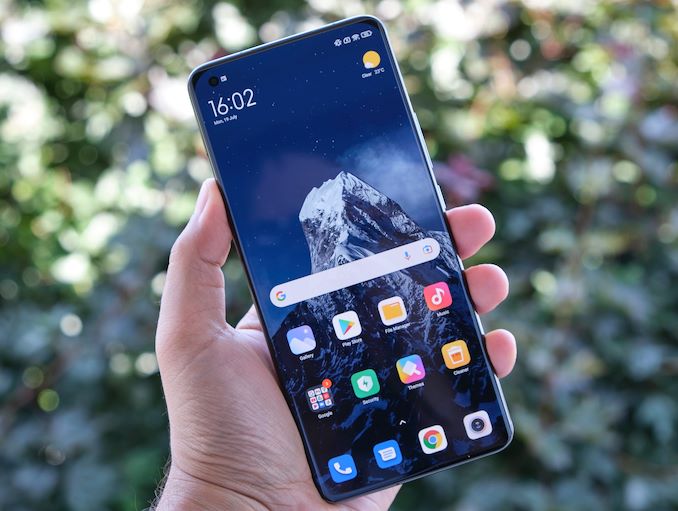
Amongst of the newest trend of having a new tier of “Ultra” Android flagship devices that are specced and priced at a notably higher tier than the traditional high-end designs, we saw Xiaomi jump onto the fray with the new Mi 11 Ultra. Announced back in March, the phone took a few months to get to market with any reasonable availability and a bit more for more reasonable pricing, however the device is now fleshed out, and after our in-depth camera review a few weeks ago, deserves an accompanying device review.
The Mi 11 Ultra in a sense is a sibling to the Mi 11 – and it is clear they are of the same generation family, having the same display specifications and the same device footprint, however where the Ultra differentiates itself is a much more massive and technically superior camera array. Let’s go over the specifications:
| Xiaomi Mi 11 Series | |||
| Mi 11 Ultra | Mi 11 | ||
| SoC | Qualcomm Snapdragon 888 1x Cortex-X1 @ 2.84GHz 3x Cortex-A78 @ 2.42GHz 4x Cortex-A55 @ 1.80GHz Adreno 660 @ 840MHz |
||
| DRAM | 12GB LPDDR5-6400 | 8/12GB LPDDR5-6400 | |
| Display | 6.81" AMOLED 3200 x 1440 120Hz Refresh 480Hz Touch HDR10+ / 10-bit panel |
||
| Size | Height | 164.3mm | 164.3mm |
| Width | 74.6mm | 74.6mm | |
| Depth | 8.38mm | 8.06mm | |
| Weight | 234g | 196g | |
| Battery Capacity | 5000mAh (Typical) 67W Charging |
4600mAh (Typical) 55W Charging |
|
| Wireless Charging | 67W | 50W | |
| Rear Cameras | |||
| Main | 50MP GN2 1/1.12" 1.4µm 4:1 Binning to 12.5MP / 2.8µm f/1.95 w/OIS 24mm eq. |
108MP HMX 1/1.3" 0.8µm 4:1 Binning to 27MP / 1.6µm f/1.85 w/OIS 24mm eq. |
|
| Telephoto | 5x optical telephoto 48MP IMX586 1/2.0" 0.8µm 4:1 Binning to 12MP 1.6µm f/4.1 120mm eq. |
5MP (Macro only) f/2.2 48mm eq. |
|
| Extra Telephoto |
- | - | |
| Ultra-Wide | 48MP IMX586 1/2.0" 0.8µm 4:1 Binning to 12MP 1.6µm f/2.2 128° FoV |
13MP f/2.4 123° FoV |
|
| Extra | dToF Sensor | - | |
| Front Camera | 20MP 0.8µm 4:1 Binning 5MP 1.6µm f/2.2 |
||
| Storage | 256GB UFS 3.1 |
128 / 256GB UFS 3.1 |
|
| I/O | USB-C | ||
| Wireless (local) | 802.11ax (Wifi 6E), Bluetooth 5.2 |
802.11ax (Wifi 6), Bluetooth 5.2 |
|
| Cellular | 4G + 5G NR NSA+SA Sub-6GHz | ||
| Special Features | Under-screen fingerprint sensor Full-range stereo speakers IR Blaster Second 1.1" 126 x 294 Rear Display |
Under-screen fingerprint sensor Full-range stereo speakers IR Blaster |
|
| Splash, Water, Dust Resistance | IP68 | No rating | |
| Dual-SIM | 2x nano-SIM | ||
| Launch OS | Android 11 w/ MIUI | Android 11 w/ MIUI | |
| Launch Price | 12+256GB: 1199€ | 8+128GB: 749€ 8+256GB: 799€ |
|
The Mi 11 Ultra shares the same Snapdragon 888 as the Mi 11 and many other flagship devices in 2021. We’ve covered the SoC plenty this year in the various implementations, including Xiaomi – so there’s nothing particular in terms of standout features for the Ultra in this regard. Xiaomi does deliver the Mi 11 Ultra only in a 12GB DRAM and 256GB storage configuration which corresponds to the higher-end option on the Mi 11.
From the front, the Mi 11 Ultra is nearly indistinguishable from the Mi 11 as it features the exact same screen and front facing design. The 6.81” AMOLED display comes with a resolution of 3200 x 1440, and features 120Hz refresh rate in a 10-bit colour panel, and Xiaomi advertises a touch input sample rate of up to 480Hz which is incredibly high in the market. Much like on the Mi 11, what’s lacking here is any more advanced technology to help with the power consumption of the panel – while there’s some coarse software refresh rate switching, there’s no real VRR and the display seems to be generally technically equivalent to what we’ve seen last year with the Galaxy S20 series devices. Keep this in mind throughout the review as it ends up being one of the Mi 11 Ultra’s key weaknesses.
Design-wise, I really like Xiaomi’s flagship line-up this year as they combine aesthetics with extremely good ergonomics and handling. It’s to be noted though that at 74.6mm device width, it’s on the larger side of the device spectrum, although the rounded frame of the phone helps it feels smaller than comparative sized devices with more squarish edges.
On the back of the phone, we find the phone’s very distinguishing feature, and that’s a massive camera setup that attempts to be outright unapologetic about how big and noticeable it is. Xiaomi had to make the camera bump large because it houses the largest camera sensor of any current generation phone on the market – a 50MP 1/1.12” main module that’s pretty much gargantuan for a smartphone.
| Xiaomi Mi 11 Ultra Cameras | |||||||||
| Optics | Sensor | ||||||||
| 35mm eq. FL |
FoV (H/V/D) |
Aperture | OIS | Resolution | Pixel Pitch |
Pixel Res. |
Sensor Size |
||
| Ultra-Wide | 12.99 | 106.3° 90.0° 118.0° |
f/2.2 | ✗ | 48.0M native (8000 x 6000) 12.0MP binned (4000 x 3000) |
0.8µm 1.6µm |
47.8″ 95.6″ |
1 / 2.00" 6.40mm x 4.8mm 30.72mm² |
|
| Main (Wide) | 23.01 | 73.9° 58.9° 86.5° |
f/1.95 | ✓ | 49.9M native (8160 x 6120) 12.5MP binned (4080 x 3060) |
1.4µm 2.8µm |
32.6″ 65.2″ |
1 / 1.12" 11.42mm x 8.56mm 97.88mm² |
|
| Telephoto | 119.07 | 16.55° 12.45° 20.60° |
f/4.1 | ✓ | 48.0M native (8000 x 6000) 12.0MP binned (4000 x 3000) |
0.8µm 1.6µm |
7.45″ 14.9″ |
1 / 2.00" 6.40mm x 4.8mm 30.72mm² |
|
Although the camera bump seems humongous, it’s not really that complicated when it comes to the actual camera module configuration as the phone “only” features three units. The aforementioned 50MP main module is what characterises the device as special from the competition, using Samsung’s GN2 sensor at 1/1.12” optical format with f/1.95 optics and OIS, and a relatively wide 23mm equivalent focal length. This is accompanied by a 48MP ultra-wide module with 13mm equivalent focal length, and because it’s an Ultra phone, Xiaomi also included a periscope telephoto module with the same sized sensor as on the ultra-wide at 48MP, and a native focal length of 119mm equivalent – or 5x magnification in relation to the main sensor.
Xiaomi’s three cameras appear simpler than the competition which may have more modules, but Xiaomi’s implementation is actually the technically superior one as it takes advantage of the dual-resolution nature of the quad-Bayer sensors on the main camera and the telephoto, which switch over from binning to their native resolutions, allowing for loss-less 12MP cropping, essentially adding in a virtual 2x telephoto as well as a 10x telephoto module in terms of picture quality, allowing the Mi 11 to be the most versatile phone camera on the market right now when it comes to various focal lengths and quality steps.
Alongside the three cameras, the Mi 11 Ultra is also characterised by having a tiny rear OLED screen alongside the camera setup, which is actually why the camera bump is the size of most of the width of the phone. The secondary rear display can act as a clock face, a custom text label, or custom image – with displaying secondary information such as battery status or a notification light (no actual notification info). When using the camera, the rear display can also be enabled to act as a preview screen which allows for high quality selfie pictures using the main cameras. It also serves as a general preview for subjects, however in 4:3 view it really becomes quite small so the subject can’t be too far away as it’s otherwise hard to make out what’s on the quite small screen.
In general, in my usage, I was relatively ambivalent about the rear display – it’s useful for quickly glancing at the time – which can be set up to light on when you pick up the phone, or when you double tap the rear screen. Beyond it delivering a relatively gimmicky feature, what Xiaomi’s design does is to bring symmetry to the camera bump which I came to realise is actually quite important when you have a camera bump of this size. It is very stable when lying on surfaces, and the bump is high enough on the phone that you generally do not notice it in everyday portrait usage. It’s still a characteristic which you will either be fine with, or hate – so generally I’d recommend people to attempt to get a hands-on experience before committing to it.
The bottom and top of the phone are characterised by dual-speaker setups, although Xiaomi’s design here can be a bit misleading as the top speaker grill isn’t actually an outlet where sound comes out, it’s the earpiece slit which is still serves as the top speaker output. There’s still some internal connection between the grill and the speaker as it does reduce distortions, but covering it up doesn’t do much in terms of audible volume difference. In general Xiaomi’s audio quality here is good, however clarity, soundstage and L/R balance is better on a S21 Ultra for example.
As with the Mi 11, the screen is curved both on all sides, left/right and top/bottom, with the corners towards the metal frame being flatter, essentially making the frame corner protrude out more. In general, I think the design decision here was made with durability in mind as if the device drops it would have a heightened chance to drop onto the metal frame rather than on the display glass.
The phone is IP68 water resistant which is a feature the Mi 11 doesn’t have, along with added in WiFi 6E capability, but what’s somewhat weird for the phone is that Xiaomi for some reason still only enables USB connectivity over 2.0 data-rates, which makes it notably slower than other 3.0 capable devices on the market.
Overall, the design and ergonomics of the Mi 11 Ultra are good – at least if you keep in mind that it’s still a large phone, and at 234g, it’s also one of the heaviest in the market right now, so definitely not something which will cater to everybody’s tastes.


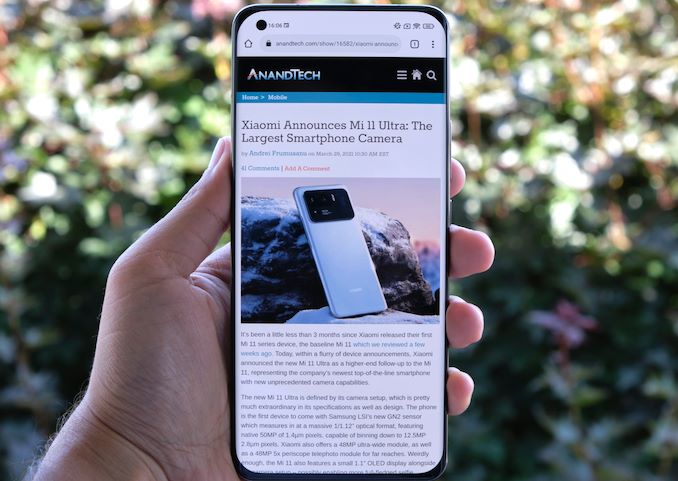
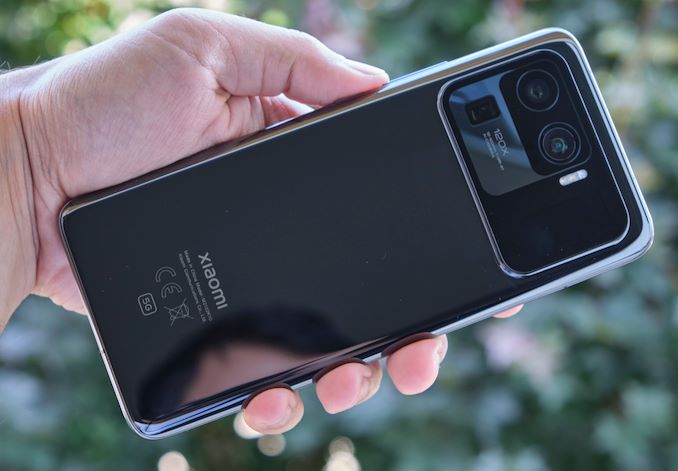
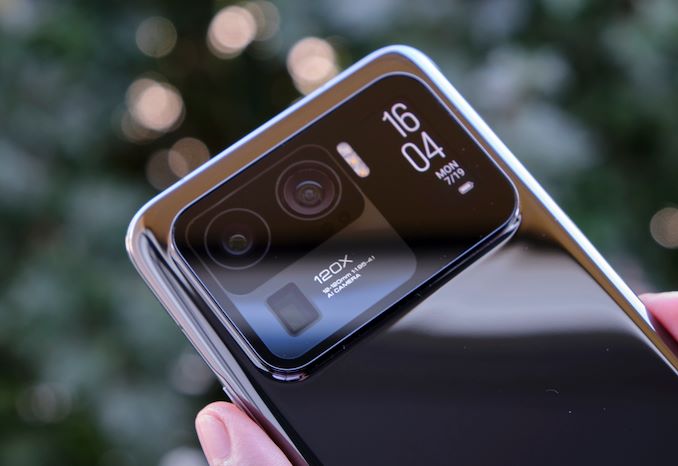

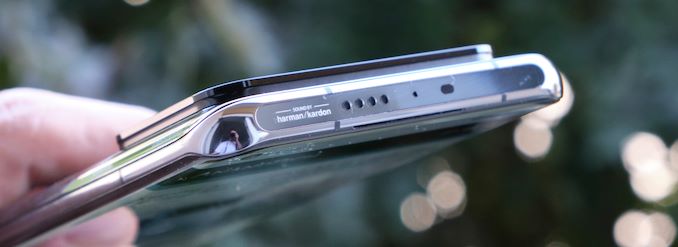









41 Comments
View All Comments
iodinegum - Tuesday, July 20, 2021 - link
Is there any news on the HDR10 image capture and video recording capability?Does the Mi 11 Ultra support HDR10 video recording at all framerate/resolution combinations like the iPhone 12 Pro Max - or is it limited to "4K" 30fps like the Oppo Find X3 Pro?
Andrei Frumusanu - Tuesday, July 20, 2021 - link
You can do HDR10+ at 4K60, or HDR10 at 8K24, but these are only limited on the main camera module/sensor, this also includes the frame merge HDR mode at max 4K30 (meaning dual-frame HDR in SDR container).Non-HDR capture works on all modules to 8K24 / 4K60.
iodinegum - Tuesday, July 20, 2021 - link
Really appreciated! I'm assuming that 10bit HEIF/HEIC image capture is still not supported on the included camera app.Would be great if HDR 10bit video/image capture support & their file formats and resolutions could be consistently mentioned in future smartphone reviews.
10bit (8bit + FRC) displays are finally slowly becoming common in smartphone displays.
Andrei Frumusanu - Tuesday, July 20, 2021 - link
HEIC mode is still only 8bit, yes.blanarahul - Tuesday, July 20, 2021 - link
Is there a power saving option that reduces GPU performance and thus heat while playing games like Genshin Impact?If yes, can you provide any 1 benchmark result for the same (full power vs per saving so that I can an idea regarding the performance loss) ?
Andrei Frumusanu - Tuesday, July 20, 2021 - link
The battery saver mode doesn't affect GPU performance.Wereweeb - Tuesday, July 20, 2021 - link
GPU Performance section, second paragraph is copied into the third.Wereweeb - Tuesday, July 20, 2021 - link
And as for ergonomics, can't say I consider curved screens to be ergonomic, or to make sense at all. But today I can 3D print a foamed TPU case, I'll stop complaining so much about it.Also, article suggestion: I know it's not directly hardware-related, but y'all could ask someone who has access to plenty broken phone parts, like a third-party repair shop, about the thickness of the glass. E.g. how thick the Gorilla Glass Victus is on the Mi 11 vs the S21.
It's an important metric for screen durability, but it's (AFAIK) completely ignored.
Silver5urfer - Tuesday, July 20, 2021 - link
Will Anandtech review Sony Xperia 1 Mark III ? These phones are not there in US and they are MIUI Chinese.Andrei Frumusanu - Tuesday, July 20, 2021 - link
Unlikely we'll review it.